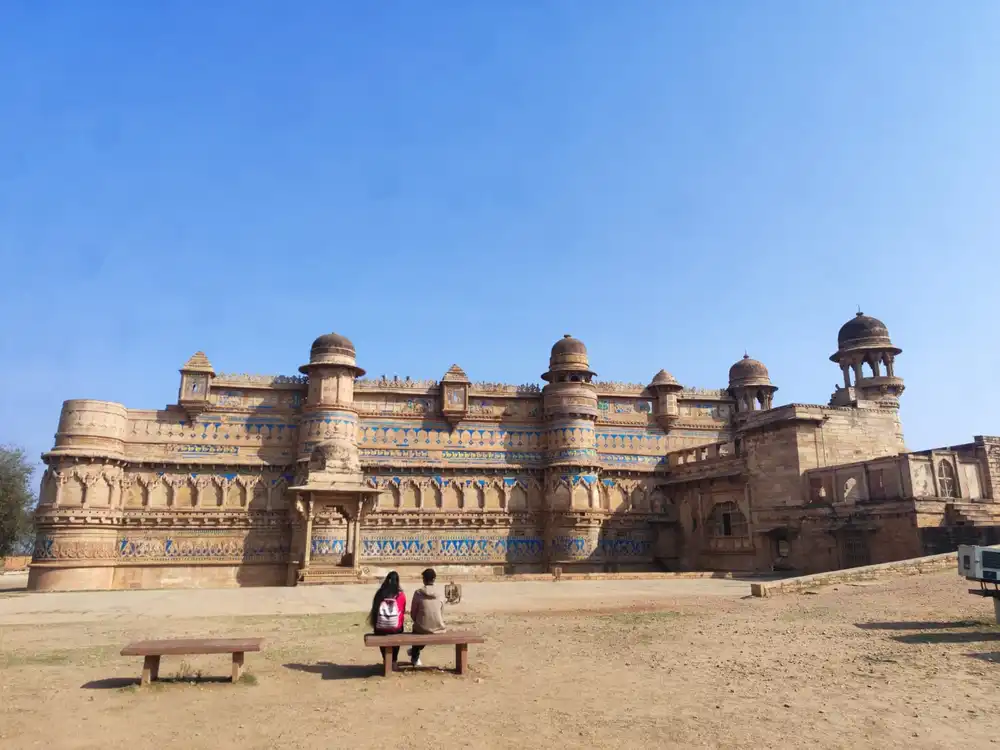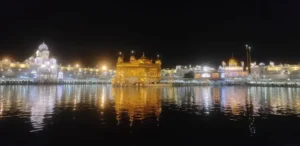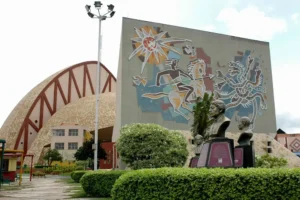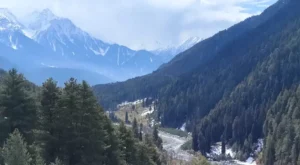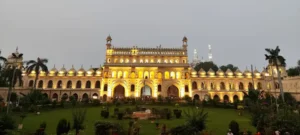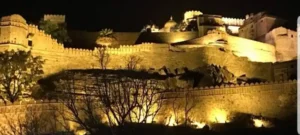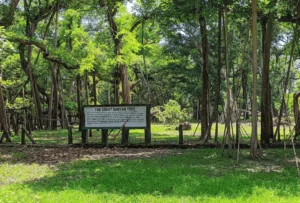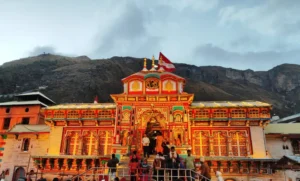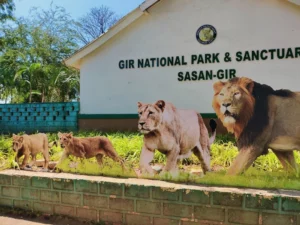Gwalior is a city in the central Indian state of Madhya Pradesh. It’s known for its palaces and temples. While the palaces and temples remain one of the top tourist attractions in Gwalior, the city has a plethora of rustic markets and shopping malls. Gwalior is famous for its textiles and handlooms.
Routes from Delhi:
By car: Take the National Highway 44. It covers a distance of 320 km. You can cover the distance in about 5-7 hours.
Air Travel: Several airlines operate flights between Delhi and Gwalior airport. It’s a short flight of 1hr
Bus Travel: One can take bus from major bus terminals like Kashmiri Gate ISBT and Sarai Kale Khan ISBT. There is several private and state-run operators, offering overnight bus options too. You can book tickets online through various travel websites like RedBus, MakeMyTrip, or directly on the operator’s website.

When to Explore Gwalior’s Wonders!
October to March: Experience Gwalior’s History in Perfect Comfort!
It’s the winter season in Gwalior, with pleasant daytime temperatures ranging from 10°C to 25°C (50°F to 77°F). This Gwalior weather is ideal for exploring historical sites without the discomfort of extreme heat. Nonetheless, it’s wise to carry sunglasses and hats for protection from the midday sun. Furthermore, visiting during the winter months enhances the experience, allowing you to enjoy Gwalior’s rich history and architecture in comfort.
April to June: Summer heat
Temperatures gradually start rising, and by May, temperature soar, reaching highs between 35°C and 45°C (95°F to 113°F). It is best to avoid outdoor activities, as there is occasional loo.
July to September: Monsoon rains
During the monsoon season, Gwalior experiences moderate to heavy rainfall. As a result, temperatures drop slightly; however, humidity levels can still be high. Although the landscape transforms into a lush, vibrant green, the heavy rains may occasionally disrupt travel plans, ultimately making outdoor activities less enjoyable. This period is not typically recommended for tourists.
Unmissable Experiences in Gwalior:
Majestic Gwalior Fort: A Glimpse into India’s Royal Heritage
Gwalior fort is situated on a hilltop in Gwalior. The fort offers stunning views of the surrounding landscape and the city below. The Tomar dynasty originally built it, and it has witnessed various historical events, including battles, sieges, and the rise and fall of empires. The fort has a nominal fee ₹40 (for indian adult), ₹200 (foreign tourists).
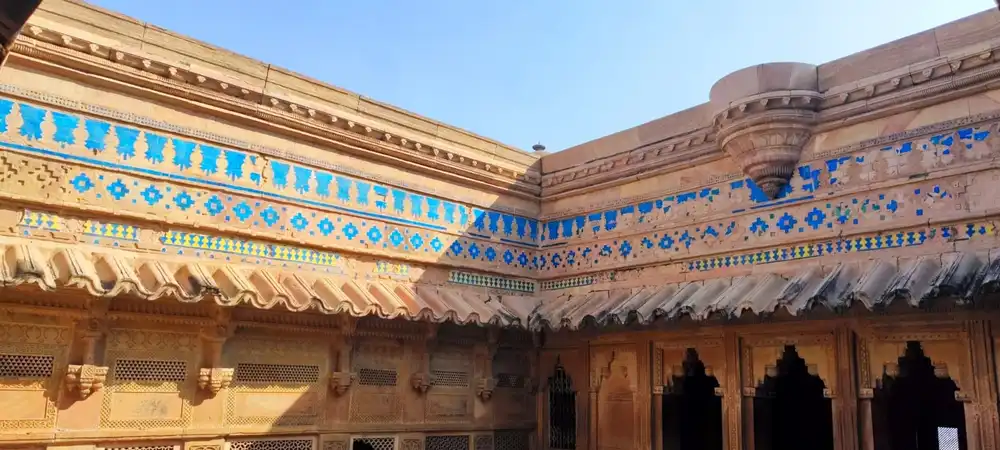
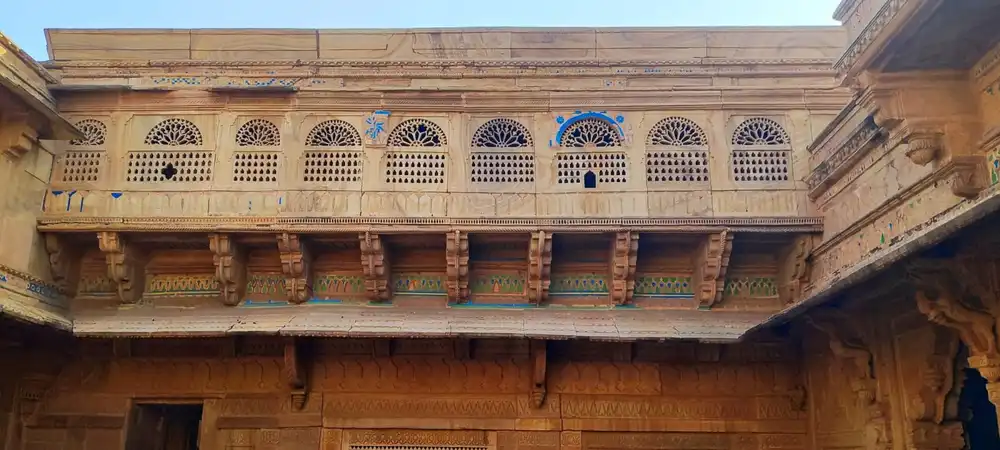
Light and Sound Show at Gwalior Fort:
The show takes place in the evening.
- Show Duration: Approximately 45 minutes to 1 hour.
- Generally starts around 7:00 PM or 8:00 PM.
- One can purchase tickets at the fort entrance or through designated booking counters.
- Indian Adults: Approximately ₹100, Foreign Tourists: Approximately ₹200.
Majestic Marvel: Exploring Jai Vilas Palace
Jai Vilas Palace is typically open from 10:00 AM to 5:00 PM on all days.
The palace was built by Maharaja Jayajirao Scindia, in between 1874 and 1888. The architecture is a blend of European styles, particularly neoclassical and Italian influences, characterized by its grand façade, ornate pillars, and intricate details. There is an extensive collection of artifacts, including royal memorabilia, vintage cars, textiles, and intricate artifacts from various periods.
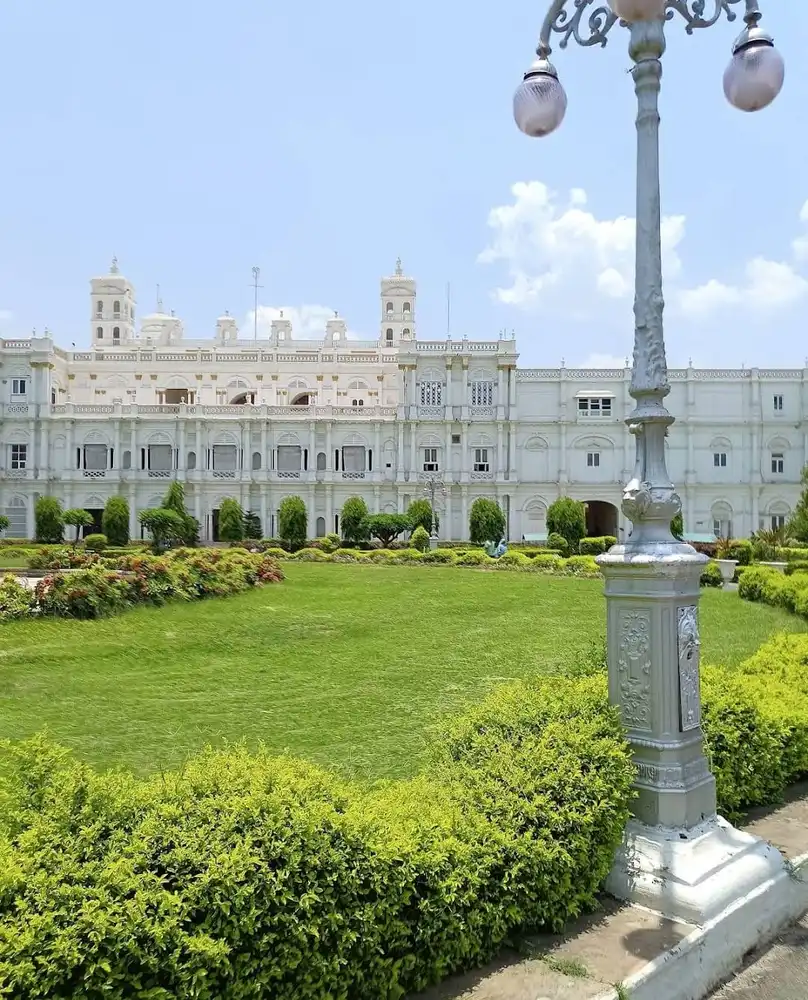
The Durbar Hall features 100 kg chandeliers that adorn the room.
The Crystal Gallery: Showcases a unique collection of crystal items, including cut glassware, chandeliers, and furniture imported from Europe.
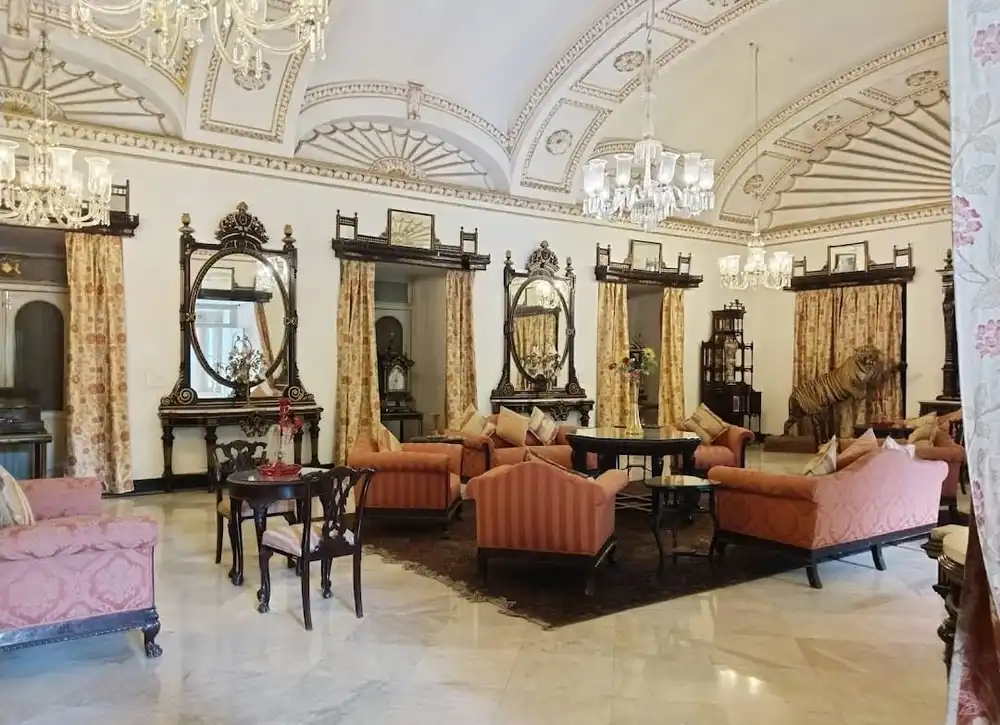
Explore Musical Heritage: Tombs of Tansen and Ghaus Mohammed
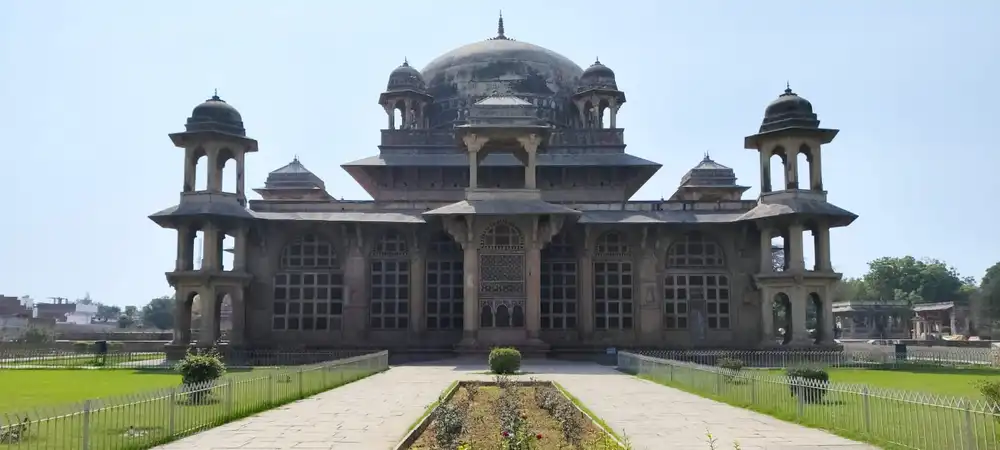
The tombs are situated near the Gwalior Fort, amidst beautifully landscaped gardens. There is no entry fee to visit the tombs.
The Mughal architectural style defines the Tomb of Tansen, with its intricate carvings, symmetrical gardens, and dome. The tomb also features an inscription highlighting Tansen’s contributions to music.
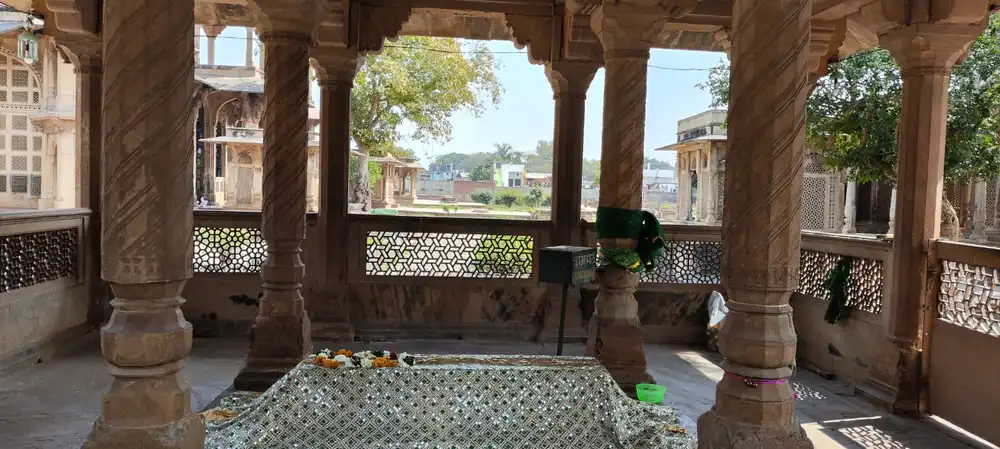
Ghaus Mohammed was Tansen’s mentor and a notable musician, known for his expertise in Hindustani classical music. The tomb features a blend of Islamic and Indo-Saracenic architectural styles, with intricate jaali work (lattice screens) and ornate designs.
Enjoy radiance of the Sun at Surya Mandir
The Surya temple is situated on the Gwalior Fort complex, specifically on a hilltop known as Morar Hill. Historians believe that the Tomar dynasty constructed it during the 8th or 9th century. The designers created the temple in a Brahmanical style, characterized by intricate carvings and elaborate sculptures. The sanctum (garbhagriha) houses the idol of Surya, depicted riding a chariot drawn by seven horses.
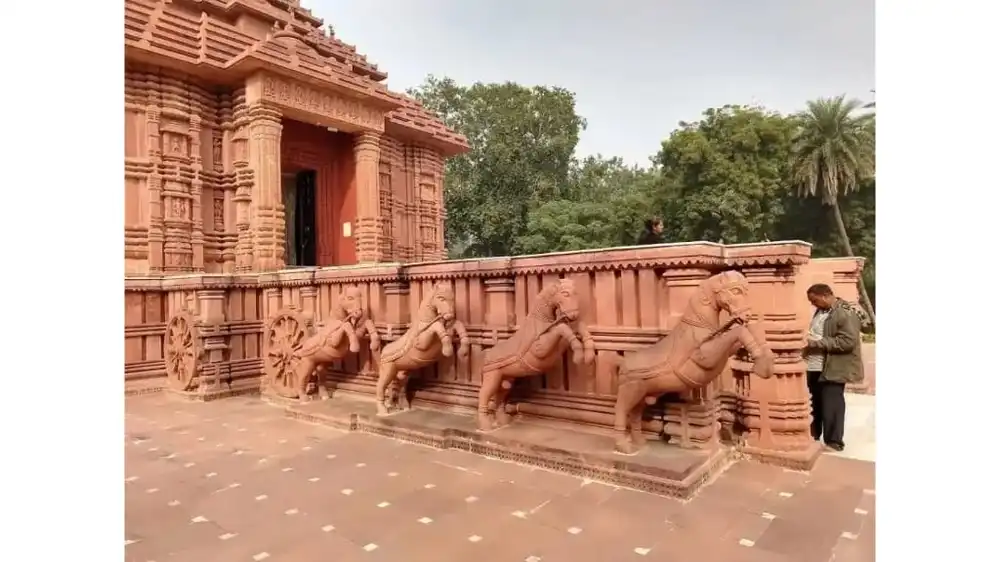
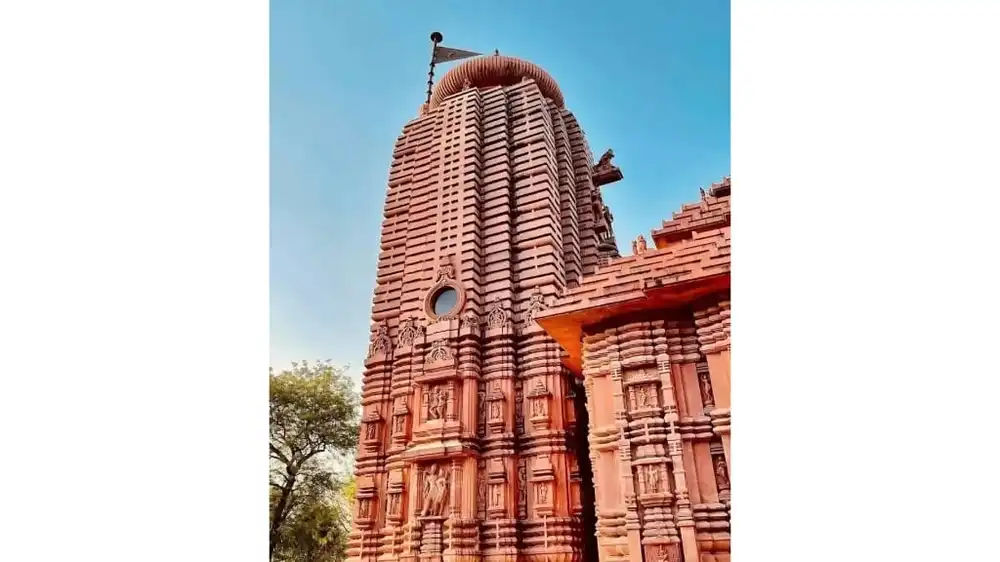
Unveiling Gwalior: A Shopper’s Paradise!
Patankar Bazaar – It’s an excellent place to buy ethnic wear like sarees and lehengas. You can also enjoy a variety of street food at Sarafa Bazaar and Lashkar Bazaar.
Gwalior offers unique handicrafts like brassware, pottery, woodwork, and handwoven textiles, known for their distinctive metalwork and artistry, making them perfect souvenirs.
Datia Handicrafts: Intricate wooden items, textiles, and decorative pieces.
Embrace the Journey: Your Adventure Awaits in Gwalior!
A visit to the majestic Gwalior promises an enriching experience that combines breathtaking architecture, rich history, and vibrant culture. From the imposing Gwalior Fort to the intricate artistry of Jai Vilas Palace and the soulful melodies of Tansen’s Tomb, each site tells a unique story that echoes the grandeur of the past. Whether you’re wandering through bustling local markets or indulging in the delicious flavors of local cuisine, Gwalior promises a delightful journey for every traveler. From embracing the charm of this historic city to creating memories that will truly last a lifetime, each moment in Gwalior offers something special.
